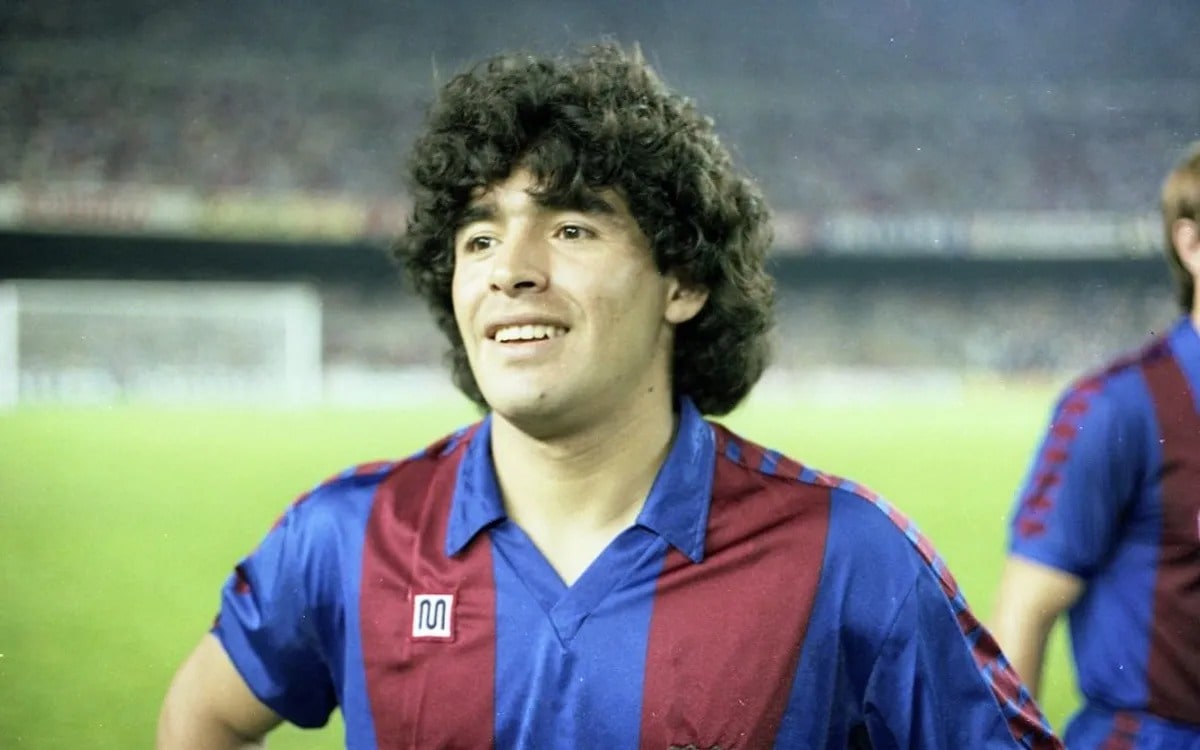Remembering Diego Maradona’s time in Barcelona
The Argentine’s time in Catalonia was perhaps marked more by brawls and incident than trophies and footballing artistry

Arguably the best player to have ever played the game, Diego Armando Maradona’s name is perhaps most remembered for his time with the Argentina national team and Italian club Napoli, but the legend first arrived on European shores with FC Barcelona in 1982.
After passing away on Wednesday, November 25, 2020, at the age of 60, we take a look back at the time the Argentine god spent in Catalonia. Also known as ‘el Dios’ (‘the god’), his stint at Barça wasn’t as glittering as his time in Naples; his two years at the club are more remembered for incident and controversy than trophies - but nevertheless, his time at the Camp Nou is rich with story and intrigue.
Arrival to Catalonia
When playing for the albiceleste at the 1982 World Cup, where he lined out in the Camp Nou and in Espanyol’s old Sarrià stadium, Maradona met with former Barça vice president Nicolau Casaus who eventually persuaded him to join the blaugrana for a then world-record fee. The player and the director would go on to have a close relationship, with ‘El Pelusa’ (‘the hairy one’) describing Casaus as his second “sporting father.”
El Diego's love for nightlife and troubles with substance abuse are well documented and it was during his time in Barcelona, where he famously had a ‘clan’ of friends with whom he would party until the early hours of the morning, that he first started using cocaine.
Details of the origins of his illness are cloudy, but the Argentine legend was forced to miss a significant chunk of his first season at the Camp Nou due to hepatitis.
The football god’s first coach at the club, Udo Lattek, didn’t have a great relationship with the player, and once left for a match without his number 10 after Maradona didn’t arrive at the team bus on time. While the player was sidelined with the hepatitis illness, the team struggled and were knocked out of the Cup Winners’ Cup, with Lattek eventually replaced in the dugout by César Luis Menotti.
Without their star player, Barça fell too far behind in the league to fight for the title, but went on to claim the Copa del Rey, beating Real Madrid in the final. All in all, ‘El Pelusa’ had a much better relationship with his compatriot Menotti installed manager, who even changed the training schedules of the club to the afternoons and evenings, to accommodate Maradona sleeping late in the mornings.
Rivalry with Athletic Bilbao
Athletic Bilbao won the La Liga title in El Diego's first year in Catalonia, and the Basques would turn out to be perhaps the Argentine’s biggest rivals during his stay in Barcelona.
The two sides met early in the league campaign of Diego’s second season at the Camp Nou in a game that would go down in infamy in the story of the player. Andoni Goikoetxea earned himself the nickname “the Butcher of Bilbao” for a crunching tackle from behind that ended up breaking the ankle of Barça’s number 10 and going down as one of the worst challenges in the history of football.
Once again, Maradona was left incapable of impacting on his team’s fortunes for a large part of the season, but when he returned to the pitch, he had revenge in his sights. Soon after coming back from that horrific injury, he scored twice as Barcelona beat Athletic Bilbao 2-1.
This victory wouldn’t be enough to claim the league title, however, as the Basques retained their crown, and Maradona’s battle with Bilbao was only heating up.
Mass brawl
The sides would meet in the Copa del Rey final at the end of the season in what would be the player’s final outing for the club. Athletic Bilbao were once again the opponents and victors, claiming a 1-0 win to take home the double.
At the end of the encounter, the 1986 World Cup winner's frustrations exploded. The ill-feeling between Athletic Bilbao and Diego Maradona had been constantly growing throughout his time in La Liga, between the nasty tackle from Goikoetxea, incessant abuse from other players, and constant gauding from the Basque fans.
Upon the final whistle and more taunting from opposing players, Maradona launched a flying kick into the torso of Miguel Sola, kicking off one of the most chaotic mass brawls ever seen in football. Players and staff on both teams got involved as kicks, punches, and shoves were dished out indiscriminately.
For his part in the melee, Maradona was handed a three-month ban from the Spanish football federation that he never served as in the summer of 1984, he moved to Napoli to write the most glorious chapters of the Italian club’s history.
Legacy
‘El D10s’ will forever be remembered in Catalonia for his iconic and beautiful style of play, even if the honours list won at FC Barcelona is somewhat barren for a player of his stratospheric level - Diego left Barça with just a Copa del Rey, a Super Cup, and a League Cup to his name. However, a return of 38 goals in 58 matches is undeniably an impressive record.
When Lionel Messi broke through to the first team, the inevitable comparisons were made, given the similarity of style of play and Argentine nationality. Maradona inspired everyone who came after him, none more so than the current captain of the Catalan club.
Barça fans have an appreciation for great art on the football field, and Maradona fed fans more artistic brilliance than the world had ever seen, although perhaps more so while wearing light blue jerseys than Barça’s blaugrana.
Nevertheless, he will be remembered as the eternal god of the game, and FC Barcelona fans will be proud to have had such a seismic personality form part of their club.